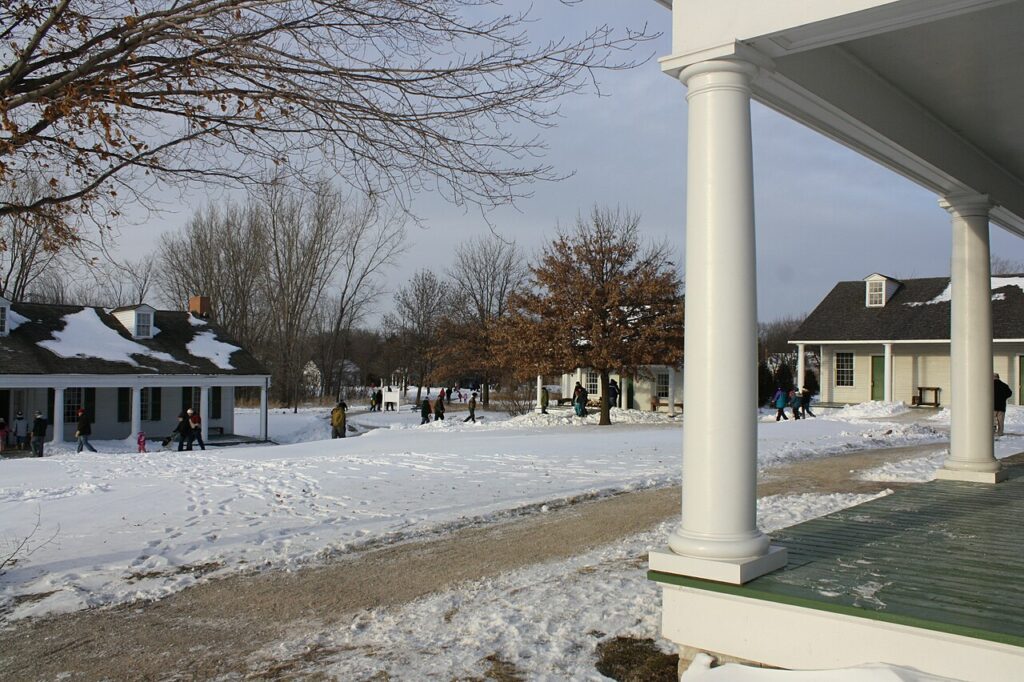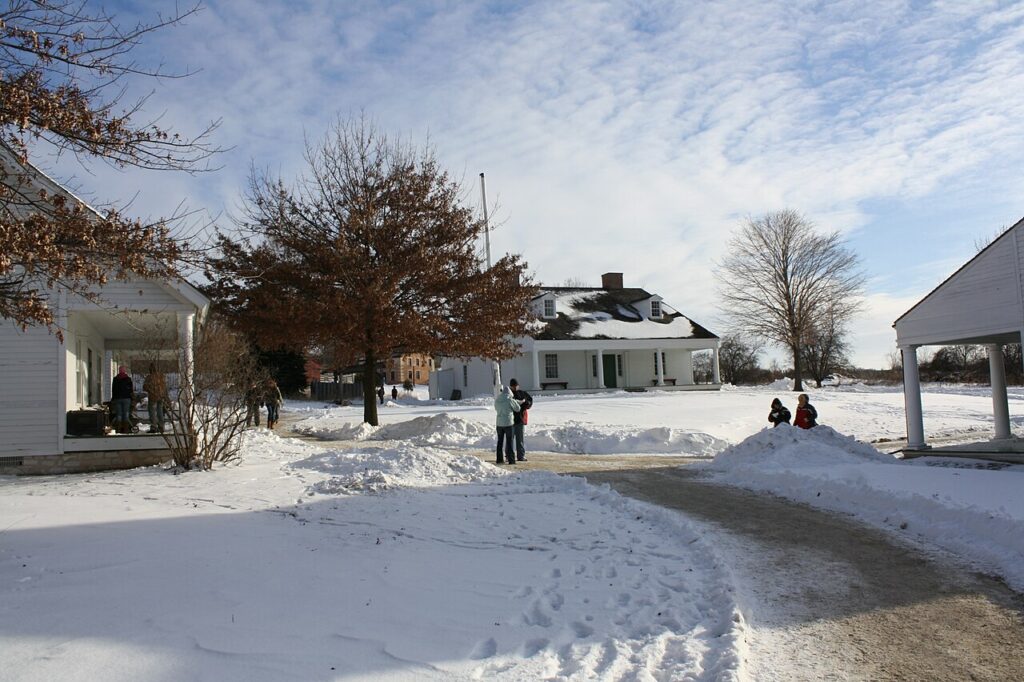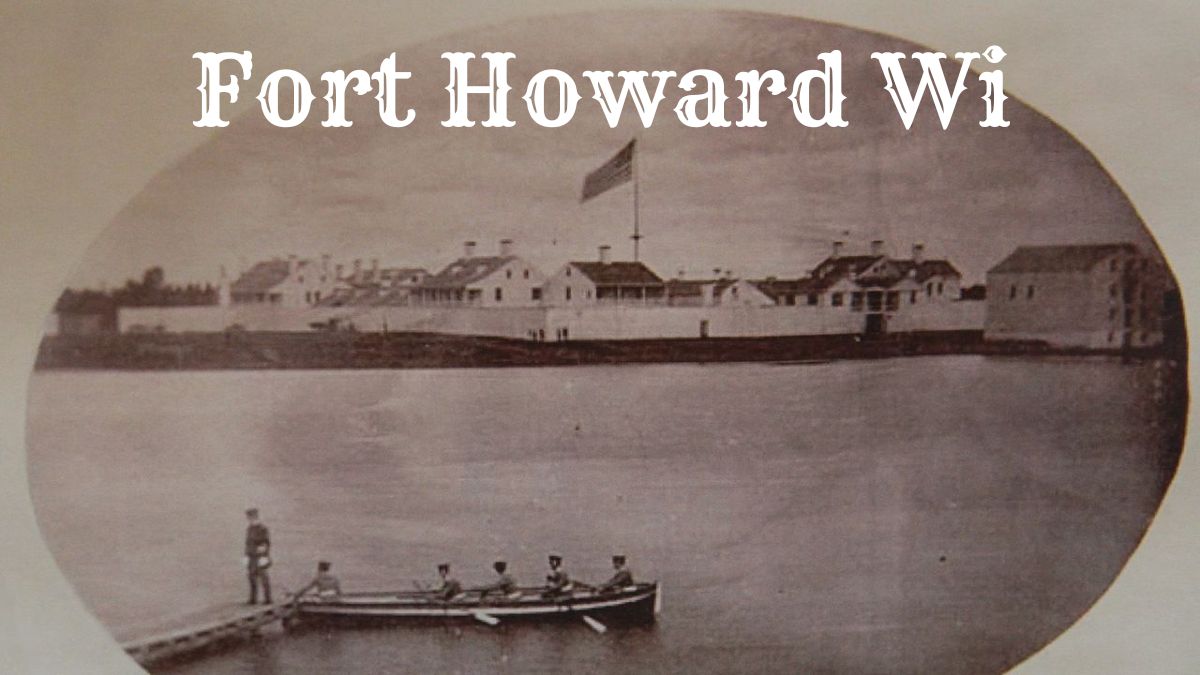Located along the west bank of the Fox River, Fort Howard in Green Bay, Wisconsin, embodies the region’s historical legacy.
Initially established in the 19th century, Fort Howard played a crucial role in early America’s defense and economic development, mainly through the fur trade.
Major Charles Gratiot’s expert engineering led to the fort’s construction in 1816, ensuring its resilience until decommissioning in 1852.
Today, Fort Howard remains a significant cultural landmark, offering visitors a glimpse into its storied past, vibrant arts scene, and commitment to preservation and education.
Historical Significance of Fort Howard

Fort Howard was a pivotal military installation that shaped the regional dynamics in the 19th century.
Its influence is seen across various domains, from military affairs tied to the fur trade to the impact on local heritage.
Fort Howard’s Role in the 19th Century
Fort Howard, strategically located in Green Bay, Wisconsin, played an instrumental role in not only the defense system of the early United States but also in the region’s economic development.
As an integral part of the chain of forts from Detroit to Prairie du Chien, it oversaw and secured the fur trade routes crucial to the country’s growth.
- Strategic Defense: Safeguarded the Northwest Territory.
- Economic Impact: Central hub for the fur trade industry.
The fort served as a sentinel for the gateway to the rich Wisconsin prairie, bolstering the nation’s expansionist efforts.
It stood as a bulwark against potential threats and fostered commerce, the lifeblood of early American frontier communities.
Major Charles Gratiot’s Influence
Major Charles Gratiot was pivotal to the fort’s standing.
His engineering expertise led to the construction of Fort Howard in 1816, which withstood the tests of time until decommissioning in 1852.
- Construction: Gratiot’s oversight led to a durable structure that became part of the area’s rich heritage.
- Legacy: His contribution to the fortification extends beyond military architecture to influencing the cultural and historical landscape.
Gratiot’s fortification adeptness imbued Fort Howard with the resilience necessary to protect and nurture Green Bay’s burgeoning community and commerce.
Geographical Context and Attractions
Fort Howard, Wisconsin, is notable for its strategic location along significant water bodies and its collection of historical and natural attractions.
Its proximity to key landmarks makes it an appealing destination for history buffs and nature enthusiasts.
Proximity to Important Water Bodies
Fort Howard is situated on the west bank of the Fox River, a vital waterway that flows into the expansive Lake Michigan.
This proximity to the Fox River not only shapes the local landscape but also provides a range of recreational activities such as fishing and boating.
Notably, the Mississippi River, one of the largest rivers in the United States, is also relatively close by, further underscoring the area’s connection to crucial inland water routes.
Key Landmarks and Estates
Regarding landmarks, the region is home to Fort Winnebago, a historic site that offers visitors a glimpse into the area’s military past.
As for natural attractions, the Green Bay Botanical Garden is a short distance away. It offers beauty and higher ground for various plant species.
The garden is a living museum within easy walking distance of Downtown Green Bay, making it an accessible retreat from the urban environment.
Visitors can engage with the landscape through many paths that weave through the diverse plant collections.
Cultural and Modern Amenities

This section provides an overview of Fort Howard’s arts scene and residential spaces, highlighting the blend of culture and modern living facilities.
Arts and Lifestyle
Fort Howard boasts a vibrant arts scene with venues offering live music performances catering to various musical tastes.
Local museums are integral to the community, providing educational and cultural experiences through diverse exhibits.
Housing and Community Spaces
The real estate market in Fort Howard features a mix of historical and contemporary properties.
Officer’s quarters have been repurposed into bedroom units, combining historical charm with modern amenities.
Common areas are designed to foster community engagement while ensuring privacy policies are respected.
Historical buildings like the orderly room and company kitchen offer unique living experiences and community gathering spots.
Educational and Preservation Efforts

Fort Howard, Wisconsin, demonstrates its commitment to education and preservation through various initiatives—these efforts center on sustaining its rich heritage and engaging the community through local expertise.
Local Museums and Interpretive Centers
Fort Howard acknowledges the importance of educating visitors and residents about its history.
Local museums staffed by knowledgeable historians play a pivotal role in this educational process. They offer curated displays and programs that depict the area’s past.
For example, Nick Backhaus, a prominent figure in historical preservation, often shares his expertise during the Green Bay Botanical Garden’s educational sessions.
Office Hours:
- Monday to Friday: 9 AM – 5 PM
- Saturday: 10 AM – 6 PM
- Sunday: Closed
Preservation and Restoration Initiatives
Preserving Fort Howard is an ongoing endeavor, with numerous initiatives advocating for maintaining and restoring historical sites.
Efforts are spearheaded by a dedicated restoration manager who ensures the integrity and longevity of historic structures.
The emphasis is on preserving original architectural features while adapting to contemporary needs.
Active Initiatives:
- Structural Restoration: Repair and maintenance of historic buildings.
- Public Workshops: Hands-on education about traditional restoration techniques.
Explore More: 5 Historic Forts of Wisconsin
Demographics and Local Infrastructure
Fort Howard, Wisconsin, has a diverse demographic profile and a well-established local infrastructure.
The area’s resident statistics show a mix of historical lineage stemming from French settlers and a modern American suburb.
Within its bounds, the infrastructure is equipped to serve its residents with public facilities, policies, and accessible services aligning with the state of Wisconsin’s regulations.
Resident Statistics and Urban Development
Fort Howard’s demographic composition is monitored through census tracts to ensure accurate data collection and urban planning.
The region reflects a heritage of Eastern forts and French settlers, influencing community events and cultural landmarks.
- Population Distribution (as per the latest census):
- Median Age: 35 years
- Ethnicity Ratios: Data Unavailable (Please refer to the State Census Data)
- Growth Rate: 0.8% per annum
- Urban Development:
- The recent construction of a veterans memorial, which includes a prominent grave photo display
- Development timeline plans for the next five years are available via the municipal email address.
Public Accessibility and Policies
Fort Howard strongly emphasizes public accessibility, with comprehensive policies in place to support this goal.
Infrastructure such as roads, public transportation, and amenities adhere to state guidelines, ensuring equal access for all residents.
- Transportation Network:
- Bus Services:
- Coverage Area: City-wide, including all major suburbs
- Accessibility: Wheelchair accessible on all routes
- Roads:
- Maintenance: Yearly, with winter-specific measures
- Bus Services:
- Public Policies:
- Inclusion of enhanced accessibility features in all public building designs
- A commitment to short-time response for public inquiries, available at the provided municipal email address

Cory is a website owner and content creator who enjoys fishing, history, coin collecting, and sports, among other hobbies. He is a husband and father of four.
Romans 15:4 For whatever was written in former days was written for our instruction, that through endurance and through the encouragement of the Scriptures we might have hope.

